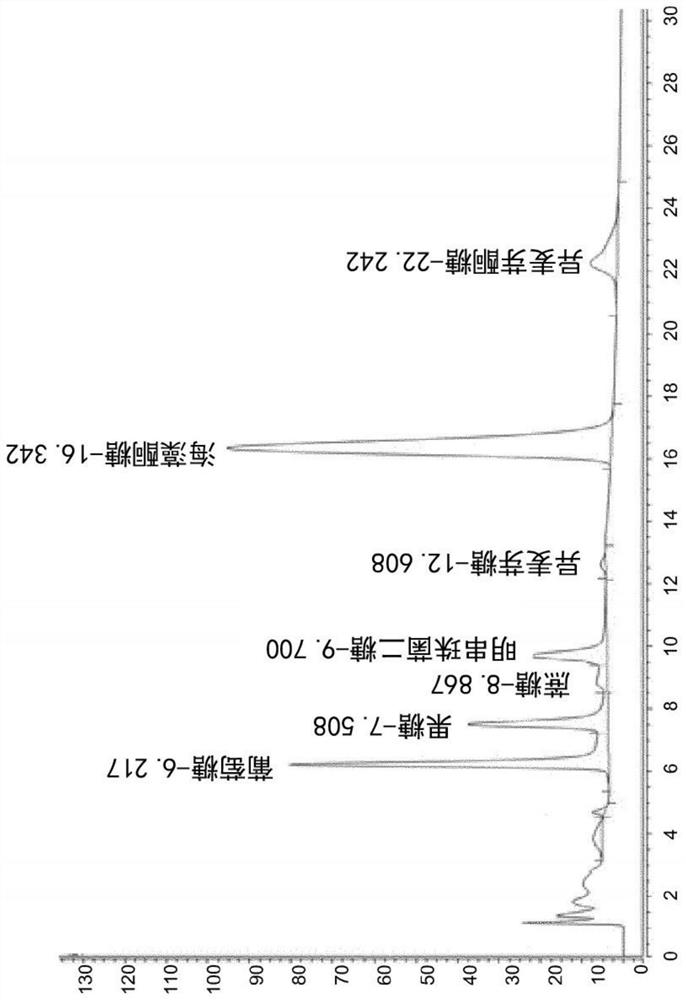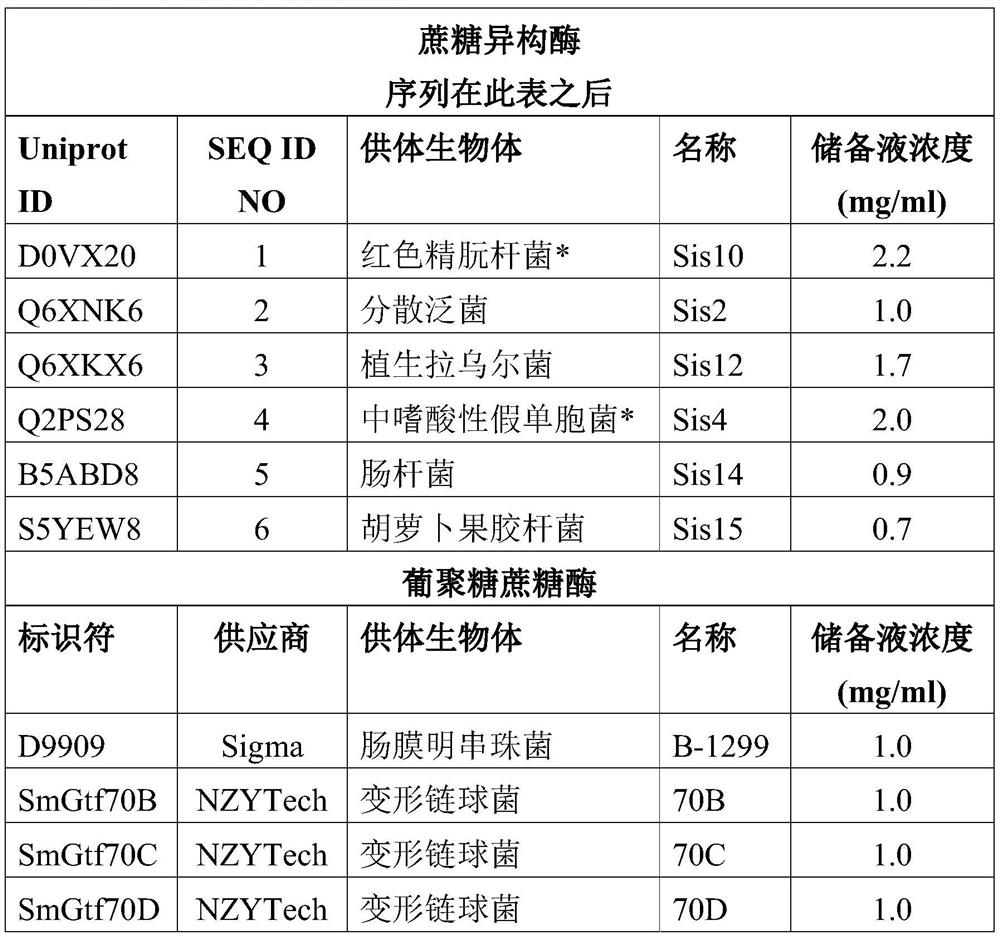Sucrose isomerases as food and nutritional supplements
A technology of sucrose isomerase and nutritional supplements, applied in the field of sucrose isomerase, can solve the problems of being expensive and affecting the taste of the final product
- Summary
- Abstract
- Description
- Claims
- Application Information
AI Technical Summary
Problems solved by technology
Method used
Image
Examples
Embodiment 1
[0064] Sucrose Isomerase
[0065] Six proteins annotated as sucrose isomerases were selected from the Uniprot database. The sequences were derived from P. rubrum (Uniprot: DOVX20), Pantoea disperse (Uniprot: Q6XNK6), Raoultella vegetativea (Uniprot: Q6XKX6), Pseudomonas mesoacidophilus (Uniprot: Q2PS28), Enterobacteriaceae (Uniprot : B5ABD8) and Pectobacter carotovii (Uniprot: S5YEW8). Putative signal peptides of Gram-negative bacteria were predicted by SignalP 4.1 prediction software (Petersen, Nature Methods, 8:785-786, 2011). When present, these signal peptides were replaced by methionine (M), and this resulted in the protein sequences depicted in SEQ ID NO: 1-6.
[0066] Protein sequences (SEQ ID NO: 1-6) were expressed in E. coli as described in WO2017050652(A1). According to DNA2.0 ( Technology) algorithm to codon-optimize a synthetic DNA sequence encoding a putative sucrose isomerase for expression in E. coli. For cloning purposes, a DNA sequence containing an N...
Embodiment 2
[0096] Activity of sucrose isomerase at different pH
[0097] To test the activity of different sucrose isomerases on sucrose at different pH, we incubated 20% sucrose / 250 mM sodium phosphate buffer with 10% dilution (0.07-0.21 mg protein / ml) of different enzymes. The pH of the solution was set at 4.5 and 6.0 and incubated at 37°C for 6 hours before stopping the reaction by heating at 99°C for 5 minutes. The conversion of sucrose to different sugars was quantified using the Dionex HPLC method. The results are shown in Table 3, expressed as the average percentage of experiments obtained from 2-4 different preparations of the corresponding enzyme relative to the total amount of all sugars detected in the samples after incubation.
[0098] Table 3: Conversion of sucrose to various sugars at various pH using sucrose isomerase
[0099]
[0100]
[0101] From Table 3 it is clear that all tested enzymes were able to convert sucrose almost completely at pH 6.0 and pH 4.5. P...
Embodiment 3
[0103] Activity of dextran sucrase at different pH
[0104] To test the activity of different glucansucrases on sucrose at different pH, we incubated 20% sucrose / 250 mM sodium phosphate buffer with 10% dilutions of different enzymes. The pH of the solution was set at 4.5 and 6.0 and incubated at 37°C for 6 hours before stopping the reaction by heating at 99°C for 5 minutes. Sugar composition was quantified using the Dionex HPLC method. The results are shown in Table 4 below, expressed as percentage of total sugars obtained from experiments with corresponding enzymes relative to total sugar after conversion. Because dextran can exist in different forms, it is difficult to quantify using the HPLC method used in these experiments. Therefore, the total glucan formation was calculated from the difference in the increase of fructose and glucose after correcting for the fructose and glucose content of the blank without added enzyme. Therefore, the figures shown are only rough es...
PUM
 Login to View More
Login to View More Abstract
Description
Claims
Application Information
 Login to View More
Login to View More - R&D
- Intellectual Property
- Life Sciences
- Materials
- Tech Scout
- Unparalleled Data Quality
- Higher Quality Content
- 60% Fewer Hallucinations
Browse by: Latest US Patents, China's latest patents, Technical Efficacy Thesaurus, Application Domain, Technology Topic, Popular Technical Reports.
© 2025 PatSnap. All rights reserved.Legal|Privacy policy|Modern Slavery Act Transparency Statement|Sitemap|About US| Contact US: help@patsnap.com



